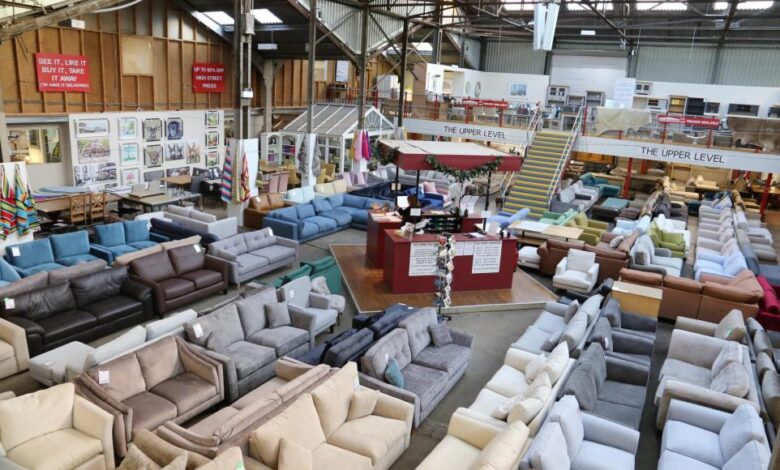Top Trends in the Wholesale Furniture Suppliers Industry

The wholesale furniture suppliers industry is undergoing significant transformation, driven by evolving consumer preferences, technological advancements, and market dynamics. Understanding these trends is crucial for stakeholders looking to navigate this competitive landscape effectively. Here, we explore the top trends shaping the wholesale furniture sector today.
1. Emphasis on Sustainability
Eco-Friendly Materials
As environmental concerns gain traction, wholesalers are increasingly prioritizing sustainable materials. Consumers are seeking furniture made from responsibly sourced wood, recycled materials, and eco-friendly finishes. Wholesalers who can provide transparency regarding their sourcing practices are likely to gain a competitive edge.
Circular Economy Practices
The concept of a circular economy is gaining momentum, with furniture suppliers adopting practices that minimize waste. This includes offering upcycled products and designing furniture for disassembly, making recycling easier at the end of its life cycle. Suppliers implementing these strategies are appealing to environmentally conscious retailers and consumers alike.
2. Technological Integration
E-Commerce Growth
The rise of e-commerce is revolutionizing how wholesale furniture suppliers operate. Many suppliers are enhancing their online presence, offering user-friendly platforms for retailers to browse, order, and manage inventory. This shift towards digital commerce allows for greater reach and convenience in a competitive marketplace.
Augmented Reality (AR) Tools
AR technology is becoming increasingly popular among wholesalers. Suppliers are leveraging AR tools to allow retailers and consumers to visualize furniture in their spaces before making a purchase. This technology enhances the buying experience, reducing returns and increasing customer satisfaction.
3. Customization and Personalization
Tailored Solutions
Today’s consumers crave personalized experiences, prompting wholesale suppliers to offer customization options. This trend includes allowing retailers to select materials, colors, and designs that align with their target market’s preferences. Wholesalers who embrace this trend can cater to a broader range of consumer tastes and foster stronger retailer relationships.
Small-Batch Production
In response to the demand for uniqueness, some suppliers are shifting towards small-batch production runs. This allows for limited-edition pieces that appeal to consumers seeking one-of-a-kind furniture items. Such exclusivity can drive higher margins and attract discerning retailers.
4. Focus on Health and Well-Being
Wellness-Oriented Design
Furniture designed with health and wellness in mind is gaining traction. This includes ergonomic office furniture that supports better posture and promotes productivity. Wholesale suppliers are recognizing the importance of offering wellness-oriented options to meet the needs of health-conscious consumers.
Air Quality and Indoor Living
There is a growing awareness of the impact of indoor air quality on health. Suppliers are responding by offering furniture that uses low-VOC (volatile organic compounds) materials and finishes, which contribute to healthier living environments. This trend is particularly appealing to families and environmentally aware consumers.
5. Global Supply Chain Dynamics
Diversification of Supply Chains
Recent global events have highlighted the vulnerabilities in supply chains, prompting wholesalers to diversify their sourcing strategies. Suppliers are exploring alternative manufacturing locations to mitigate risks and ensure a steady flow of products. This diversification helps wholesalers maintain reliability in their supply chains.
Local Sourcing
In addition to global diversification, there is a growing trend toward local sourcing. Wholesalers are increasingly looking to partner with local manufacturers to reduce transportation costs and appeal to consumers who prefer supporting local businesses. This strategy can also enhance the speed of delivery and inventory turnover.
6. Enhanced Customer Experience
B2B Relationship Management
As competition intensifies, wholesale suppliers are focusing on improving their relationships with retail partners. This includes providing excellent customer service, flexible payment terms, and value-added services like marketing support and product training. A strong partnership approach can lead to long-term loyalty and increased sales.
Data-Driven Decision Making
The use of data analytics is becoming crucial for wholesale suppliers. By leveraging sales data, market trends, and customer feedback, suppliers can make informed decisions about inventory management, product development, and marketing strategies. This data-driven approach enables wholesalers to stay ahead of market trends and customer demands.
7. Trends in Design Aesthetics
Minimalist and Functional Designs
In line with modern consumer preferences, there is a notable shift towards minimalist and functional furniture designs. Suppliers are focusing on clean lines, simplicity, and practicality, appealing to consumers seeking streamlined living spaces. This trend also aligns with sustainable practices, as minimalism often leads to reduced material usage.
Multifunctional Furniture
The rise of urban living spaces has fueled demand for multifunctional furniture. Wholesalers are responding by offering innovative designs that serve multiple purposes, such as sofa beds, extendable dining tables, and storage solutions integrated into furniture. This trend enhances space efficiency and meets the needs of smaller living environments.
Conclusion
The wholesale furniture suppliers industry is evolving rapidly, influenced by sustainability, technology, and changing consumer preferences. By understanding and adapting to these trends, wholesalers can position themselves for success in a competitive market. Embracing eco-friendly practices, leveraging technology, and focusing on customization and customer experience will be key drivers in the industry’s future.





